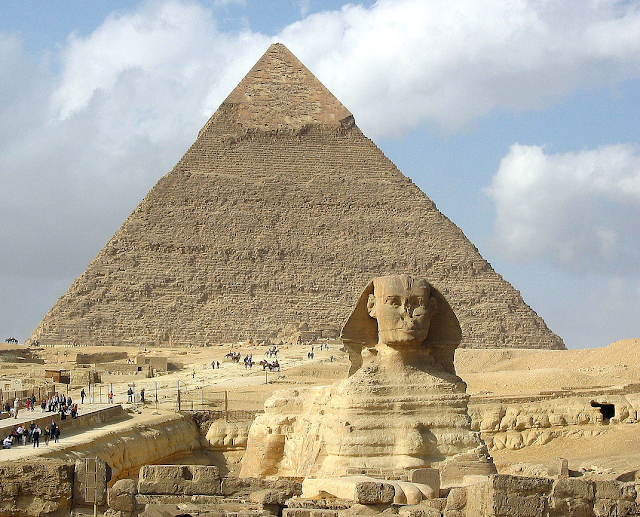Origin of the Egyptian Gods
(Image from Wikipedia)
There's a nice article here about the origin of the Ancient Egyptian gods by Caroline Seawright, an archaeology student. It dovetails nicely with what I say in 'Prehistory Decoded'. The only thing I would change is the reason predynastic Egyptians from different regions of Egypt chose their specific animal 'guardians', or patrons. Caroline repeats the orthodox view that the animals chosen either had agricultural value or were fierce or dangerous in some way. Again, while there might be some truth to this, the deeper reason is probably that they were the zodiacal signs used by each specific community, representing either a solstice or equinox. The Ancient Egyptians were, after all, very keen on astronomy, and as I show in 'Prehistory Decoded', this tradition likeky goes back many tens of thousands of years in Europe.
One (of many) piece of evidence to support this idea are the Cippus of Horus scenes. These images are found on many types of object, from stone stele to amulets - a good example is the Metternich Stele in the Metropolitan Museum of Art in New York.
Each Cippus of Horus consists of the four animals - scorpion, lion, crocodiles, and ibex/gazelle, together with a human image of Horus. Sometimes there are added serpents, and on larger objects (like the Stele), there are often written 'spells' of protection or healing. They are conventionally taken to represent 'magical healing charms', that protect from insect bites and dangerous creatures, as shown in the scene.
While this might be true, it is also the case that the four creatures probably represent the four signs of the zodiac for the date range 3400 - 2400 BC. I show in 'Prehistory Decoded' that this tradition, of using four animal symbols to represent a date using precession of the equinoxes, is very ancient indeed (the earliest known example being the Lascaux shaft scene). In this case, they signify a date near the beginning of the dynastic era. This does not mean these Cippi were made at that time, as most of them surely weren't. Rather, it probably means their 'healing spells' drew on the power of a 'Golden Age' in Egyptian history.
So, how can we relate these four animal symbols to the four signs of the zodiac? Well, by this time, the lion/leopard symbol had switched from Cancer to Leo (which it still represents today), and therefore represents the summer solstice at that time. The scorpion represents Scorpio, obviously, which was the autumn equinox constellation at that time. The ibex/gazelle normally represents either Aquarius or Gemini, depending on which culture and time frame is under discussion. Here, it represents Aquarius at the summer solstice. In west European Palaeolithic cave art, Aquarius appears to be represented by the deer/stag/megaloceros instead. Finally, we have the crocodile, which in their mythology is played by the god Sobek. This deity probably originated with predynastic Egyptians from the Fayum region, a huge ancient lake that connected to the Nile from the west. This region is known for its ancient cultural centre, Crocodilopolis, and a potential predynastic king known as the 'Crocodile King'. Whether or not there was any such person is not important. More interesting is the date of this supposed king is towards the end of the Predynastic period, around 3200 BC. Taurus was the spring equinox at this time, and we can easily imagine how a crocodile's jaws might represent Taurus in the same way the bull's horns did in neighbouring regions.
So we have perhaps decoded the crocodile, and Sobek. They probably represented Taurus, corresponding to the spring equinox in the late Neolithic predynastic Egyptian era. Of course, this association is speculation at the moment. But there are many other pieces of evidence, of which some can be found in 'Prehistory Decoded', that support this view of the origin of the Ancient Egyptian deities, and I will come to them in later posts.





Comments
Post a Comment